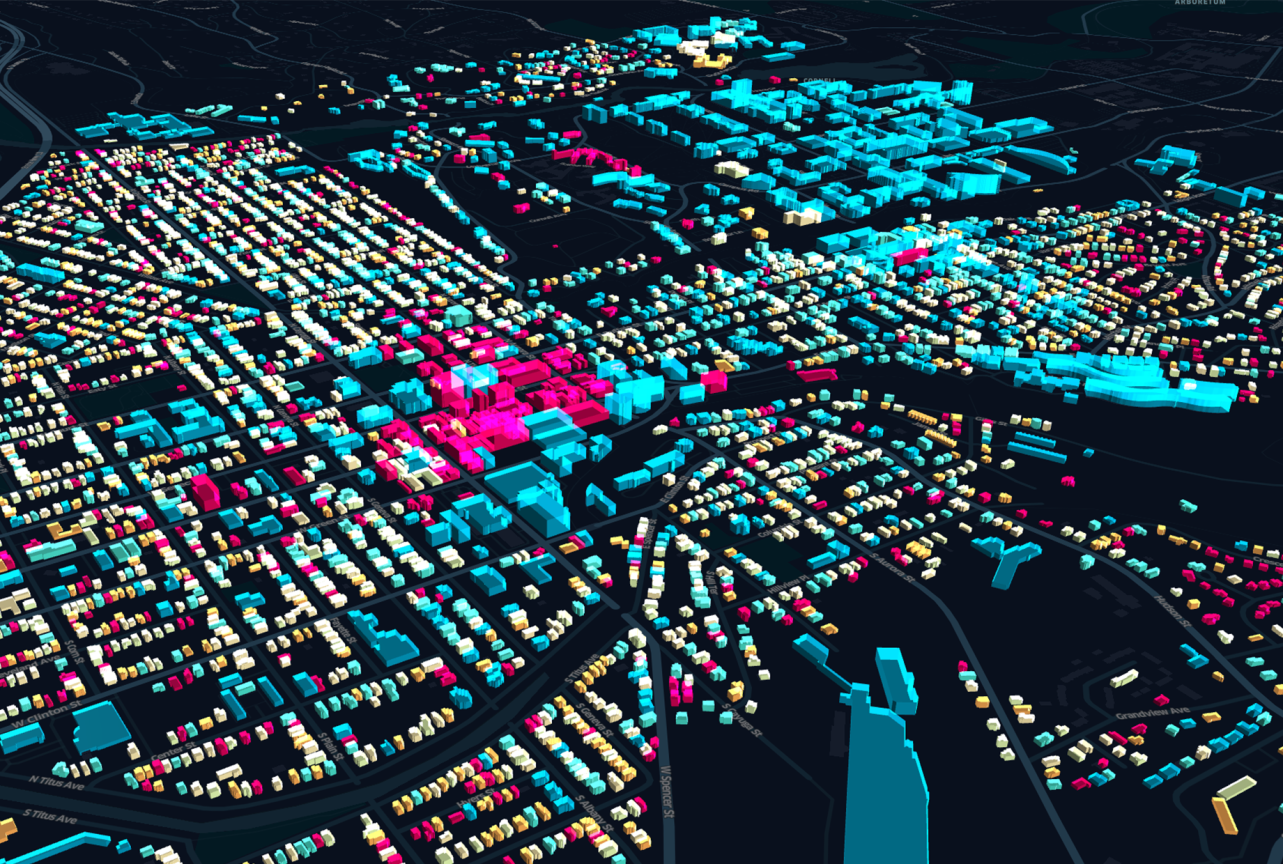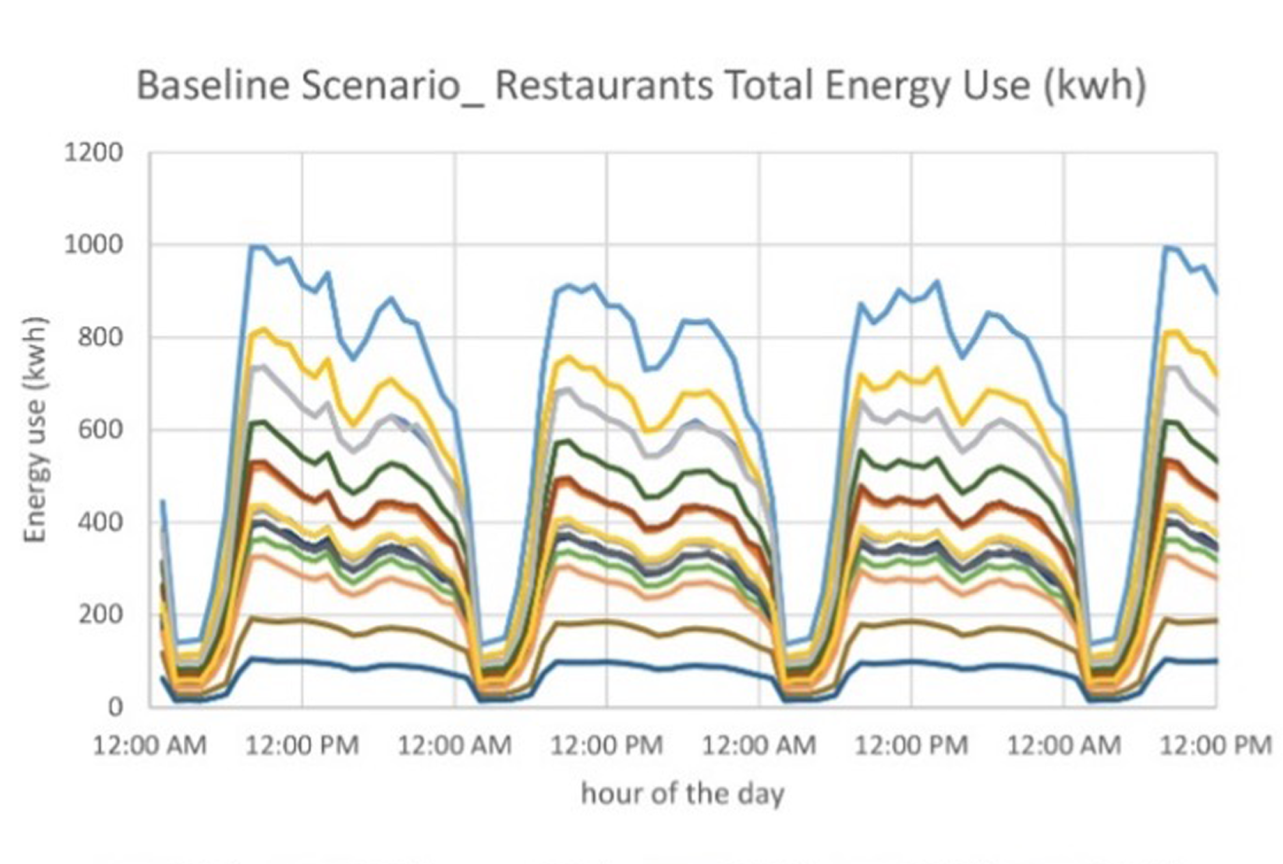
Urban Decarbonization
Urban Decarbonization
As cities serve as the main hubs of carbon emissions, a focus on urban decarbonization is essential. Beyond mere form and function, architecture and urban design play an increasingly central role in addressing the complexities of this problem. Not only will decision makers have an impact ranging from material selection to the integration of renewable energy systems and green infrastructure; they will contribute with advanced modeling and simulation tools that provide data-driven insights into the performance of our designs and how to integrate them into broader urban systems.

Fast Urban Building Energy Modeling
The shift toward urban decarbonization, which involves transitioning to heat pumps and integrating photovoltaic (PV) energy generation, poses substantial challenges to electricity grids in cities. Ithaca, NY, with its commitment to the Green New Deal, serves as a case study for cities confronted with these challenges. This paper explores how various building electrification scenarios might affect Ithaca’s net-zero ambitions. We show that our surrogate-driven Urban Building Energy Modeling (UBEM) approach can accurately predict building energy consumption data and rooftop solar PV energy generation for the 6114 buildings in the City of Ithaca. Building on that, we present three increasingly ambitious decarbonization scenarios that offer a holistic perspective on Ithaca’s future electrification potential. In automating the reconstruction of building geometry from readily available LiDAR data, along with automated BEM setup and calibration, our methodology offers a robust toolkit for utility distribution planning. We argue that our approach, which forecasts both UBEM and PV for all residential and commercial buildings in Ithaca within one model, provides insights that cannot be reached with siloed methods. Going forward, we believe that the abundance of readily available urban data sets will allow us to transition our approach to other jurisdictions to inform decarbonization efforts throughout the US.

Probabilistic Modeling of Commercial Building Occupancy
Using Location-Based Map Data
Considering occupancy patterns is crucial to simulate buildings' energy use. With the development of information technologies, occupancy modeling should not be limited to traditional approaches. The prevalence of social networks and location services with real-time user feedback provides publicly accessible data via Maps Application Programming Interfaces (APIs) such as Google Maps, SafeGraph, Mapbox, Foursquare, etc. This paper presents an automated framework for modeling parametric occupancy patterns using such APIs to calibrate commercial district buildings' energy models. This process includes three main steps: data extraction and processing, parametric schedules generation, and schedules integration. We demonstrated this framework in districts where we used maps API to generate more accurate behavioral patterns for operations and electric vehicle charging events. We used these patterns to determine differences in energy use across key sociodemographic and spatial parameters.

Community Energy by Design
A Simulation-based Design Workflow using Measured Data Clustering
This paper presents a workflow that informs urban design decisions using measured data clustering to calibrate urban building energy models. The method’s goal is to support urban design in terms of form, building systems configurations, as well as influencing user behavior aspects in the built environment through a systemic analysis of measured data to develop reliable future-case design scenario energy models. Detailed data on appliance-level electricity use are employed via data clustering to calibrate a urban building energy model for the Mueller community in Austin, TX, USA. The data were collected by the Pecan Street Institute for a year in 2014 from consumers in Austin and other surrounding cities. First, collected energy data were restructured and cleaned from corrupt and/or missing information. Second, in order to identify common energy use patterns, a model-based clustering algorithm for functional data was applied. Behavioral/usage profiles are determined through clustering and translated into usage schedules and behaviors. As a result, an urban building energy model built in the urban modeling interface (umi) was calibrated, with fully calibrated and semi-calibrated buildings, within a maximum calibration error margin of 14% for daily-scale averages. Finally, an illustration of calibrated-urban building energy model design case scenarios is presented, and implications on community energy potential effects are discussed.
Questions?
Contact Us





